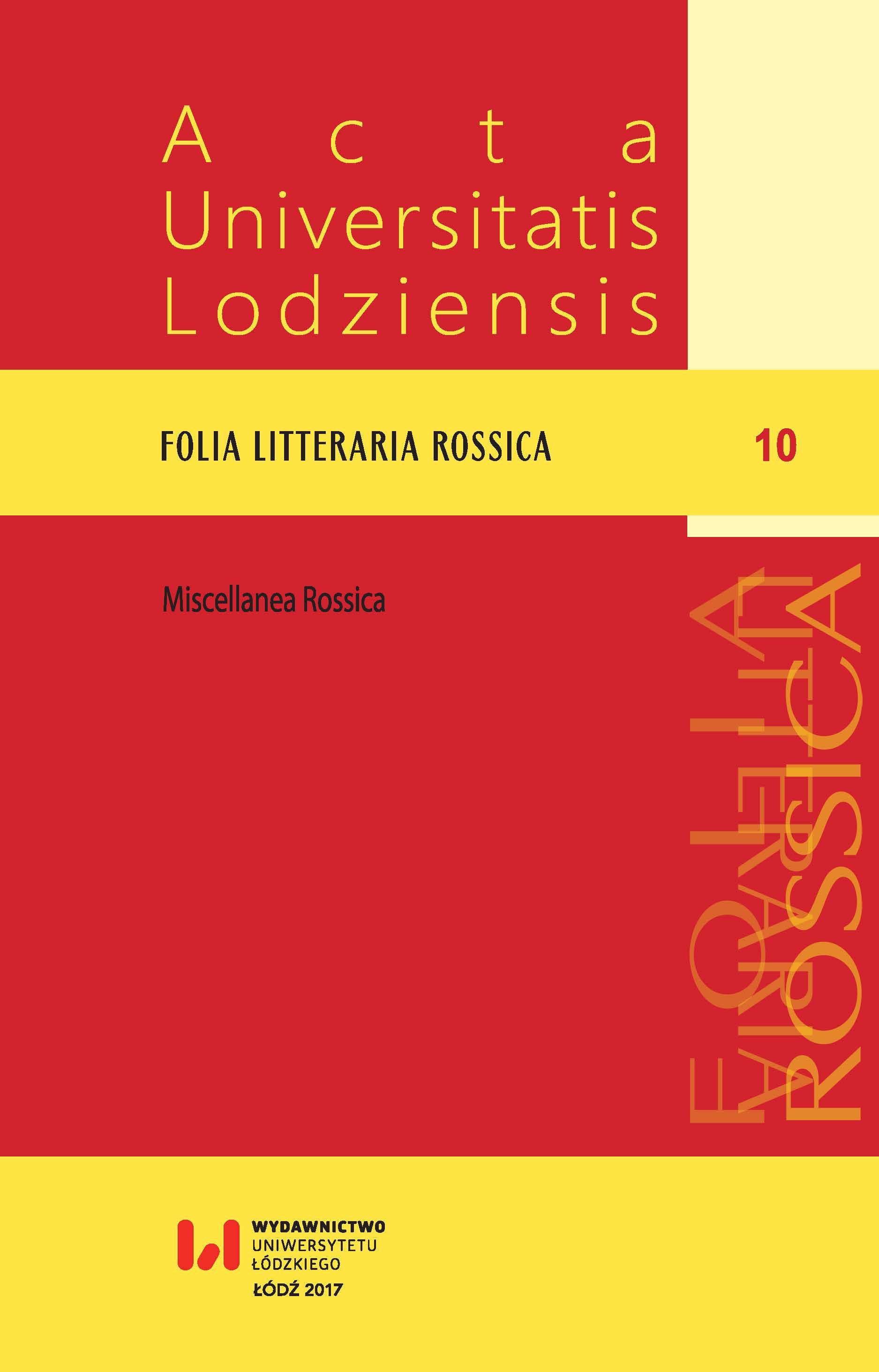Barwy dziecięcej wyobraźni, czyli o znaczeniu obrazowości w percepcji dziecięcej (na podstawie przekładu wiersza Тараканище Kornieja Czukowskiego na język polski)
The Hues of Children’s Imagination or, on the Importance of Vividness in a Child’s Perception (Kornei Chukovsky’s Poem “Tarakanishche” and its Polish Translation)
Author(s): Edyta Manasterska-WiącekSubject(s): Philology
Published by: Wydawnictwo Uniwersytetu Łódzkiego
Keywords: child; Kornei Chukovsky; children’s poetry; imagination; dziecko; Korniej Czukowski; poezja dla dzieci; wyobraźnia
Summary/Abstract: In the following article the author’s aim is to analyze how originals and translations influence the reader’s imagination. In fact, an average reader’s imaginative potential cannot be verified by any means available to a linguist. However, imagination is affected by images created by linguistic units embedded in a text. The article brings an attempt at identifying those elements of the original and translation that have the potential to activate colours and tints in a child’s imagination. Then, the author gauges whether the impressions made by the texts in this respect are comparable or different. The research material is a poem by Kornei Chukovsky, “Tarakanishche” (“Cock-the-Roach”), and its Polish translation, “Karaluszysko”. The analysis carried out leads to the conclusion that the target text contains elements that can affect the young reader’s imagination more strongly. This is the result of using exclamatory sentences, emotionally loaded vocabulary, sensory words and more detailed imagery. The greater complexity of the images in the translation creates more vivid mental pictures and potentially leads to a slightly different reception. // Zaprezentowany artykuł został poświęcony badaniu jednostek językowych, które potencjalnie mogą wpłynąć na wyobraźnię dziecka jako odbiorcy tekstu literackiego. Materiałem analizy jest wiersz K. Czukowskiego Тараканище oraz jego przekład na język polski – Karaluszysko. Badanie bogactwa i siły wyobraźni dziecka, która nie zna granic, jest niemożliwe przy wykorzystaniu narzędzi językoznawczych. Jednak analiza zawartości leksykalnej tekstu literackiego pozwala na wyekscerpowanie takich jednostek, które w sposób bezpośredni mogą oddziaływać na emocje dziecka. Porównanie badanych tekstów pozwoliło na wniosek, że tekst przekładu może znacznie silniej wpłynąć na wyobraźnię niedorosłego odbiorcy. Potencjał taki mają m.in. zdania wykrzyknikowe, leksyka nacechowana emocjonalnie oraz leksyka o charakterze sensorycznym. Pod ich wpływem „kolory” dziecięcej wyobraźni stają się bardziej wyraziste.
Journal: Acta Universitatis Lodziensis. Folia Litteraria Rossica
- Issue Year: 2017
- Issue No: 10
- Page Range: 101-111
- Page Count: 11
- Language: Polish

